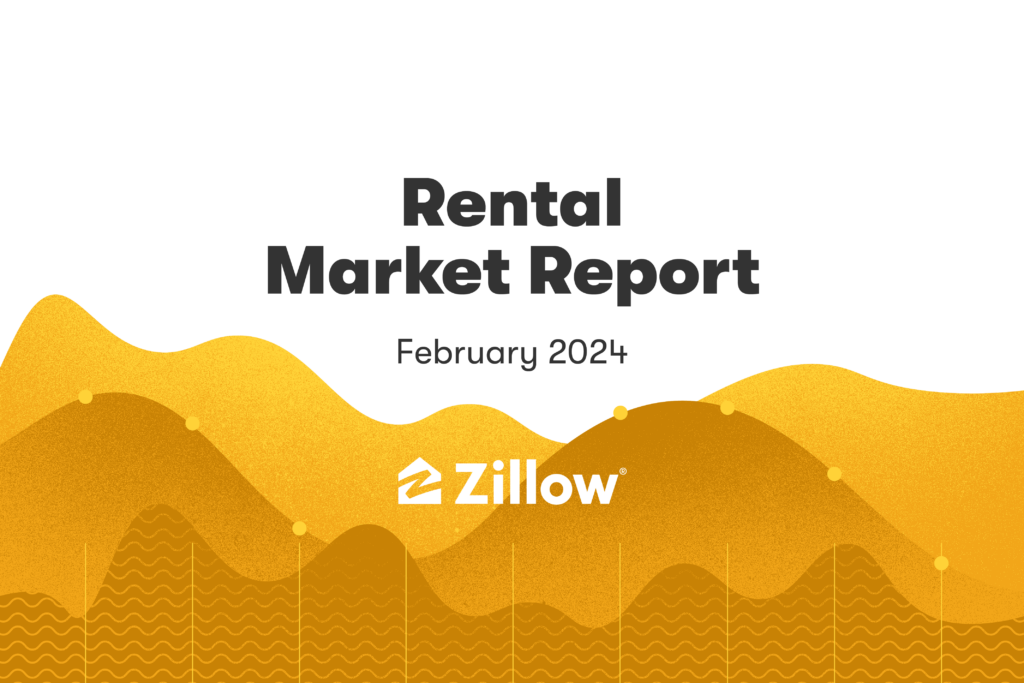Sigh of Relief? What Softening Rent Growth Means for Renters (February 2024 Rental Market Report)


As we approach the busy spring rental season, Zillow’s February 2024 rental market data offers a glimpse into the evolving rental landscape, setting the stage for shifts due to seasonality. Asking rents, measured by Zillow’s Observed Rent Index (ZORI), landed at $1,959 in February, up 0.4% month-over-month, a bit softer than the pre-pandemic average month-over-month change for this time of year (0.5%). Rents are now up 3.5% from last year, lifting the income needed to comfortably afford a typical rental to $78,379.
Current asking rate rents – up 29.9% since the beginning of the pandemic – may be a surprise to those new to the rental market. Demand for rentals is still strong, and a rising number of buildings are under construction, but rent growth is slowing.
While apartment construction and delivery of new buildings remains elevated, the increasing population is absorbing these units enough to keep vacancy rates close to pre-pandemic norms. This demand has contributed to a lift in multifamily ZORI, with asking rents for apartment units in February increasing by 0.3% month-over-month to $1,837 nationally. Since the beginning of the pandemic, apartment rents have increased by 23.6%.
Single-family rents have increased by far more, driven by the large millennial generation reaching the prime age for home buying and facing obstacles in the for-sale market. Rents for single family homes surged by 36.6% since the beginning of the pandemic and have risen 4.8% over the past year; almost twice the pace of apartment rents. Asking rents for single-family homes were $2,156 in February, up 0.5% month-over-month.
Local ZORI trends (all rentals)
Local multifamily ZORI trends
Local single family ZORI trends
In February, the median household would need to spend 29% of their income to cover the cost of a new rental without negotiating the asking rent or receiving potential concessions. This share has remained relatively stable, increasing by 0.1 percentage points year-over-year in February as employee wage growth (now down to 4.3% year-over-year) is roughly in line with asking rate rent growth (3.5%).
Despite the wage increases, the $440 increase in typical asking rent represents a significant increase in the share of median household income spent on market rate rent, climbing from 27.3% pre-pandemic to 29.0% today.